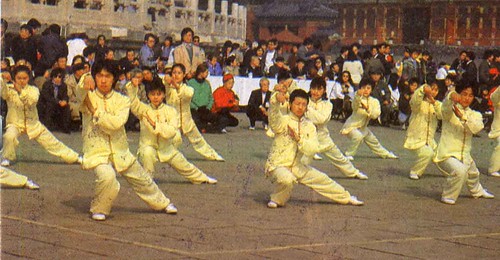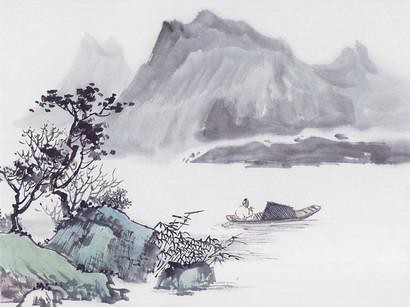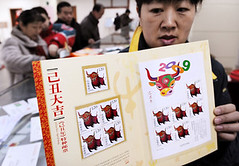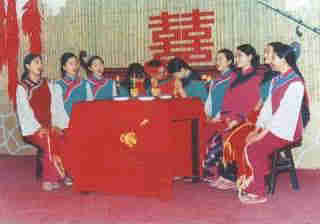| Home > Living in China > Kungfu |
Common Styles of Chinese Martial Arts
China has one of the longest histories of continuously recorded martial arts tradition of any society in the world, and with hundreds of styles probably the most varied. Over the past two to four thousand years, many distinctive styles have been developed, each with its own set of techniques and ideas. There are also common themes to the different styles, which are often classified by "families" (jiā), "sects" (pai) or "schools" (men) of martial art styles. There are styles that mimic movements from animals and others that gather inspiration from various Chinese philosophies, myths and legends. Some styles put most of their focus into the harnessing of qi energy, while others concentrate solely on competition and exhibition. Each style offers a different approach to the common problems of self-defense, health and self-cultivation.
 |
|
Taijiquan, one style of martial arts, can be performed by all. |
Chinese martial arts can be split into various categories. For example, external and internal Chinese martial arts can also be categorized by location, as in northern and southern as well, referring to what part of China the styles originated from, separated by the Yangtze River (Chang Jiang); Chinese martial arts may even be classified according to their province or city. The main perceived difference about northern and southern styles is that the northern styles tend to emphasize fast and powerful kicks, high jumps and generally fluid and rapid movement, while the southern styles focus more on strong arm and hand techniques, and stable, immovable stances and fast footwork. Examples of the northern styles include Changquan and Xingyiquan. Examples of the southern styles include Bak Mei and Wing Chun. Chinese martial arts can also be divided according to religion, imitative-styles, and more. There are distinctive differences in the training between different groups of the Chinese martial arts regardless of the type of classification.
Art
 more
moreShadow Play still Popular in Some
Shadow play, a traditional Chinese folk art with a history of more

Origin and Tools of Ink & Wash
Ink and wash painting is an East Asian type of brush painting, also

China Issued Special Stamps for
Citizens in Nanjing, East of China's Jiangsu Province, queued

Customs
 more
moreChinese Kungfu
Common Styles of Chinese Martial Arts
China has one of the longest histories of continuously recorded
Origin and Development of Wudang Martial Arts
According to the legend, Zhang Sanfeng is the originator of the
Introduction to Wudang Mountains
The Wudang Mountains, also known as Wu Tang Shan or simply Wudang,




 print
print  email
email  Favorite
Favorite  Transtlate
Transtlate 
